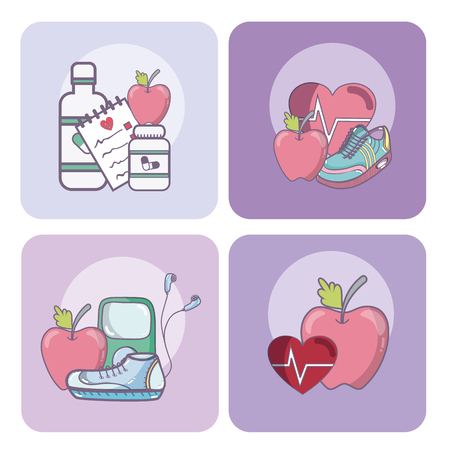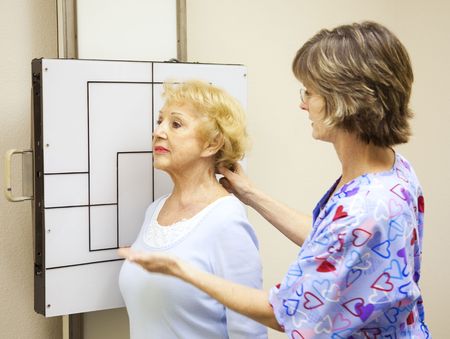1. Understanding Assistive Technology in Occupational Therapy
What Is Assistive Technology?
Assistive technology (AT) refers to any device, tool, or system that helps people with disabilities perform tasks that might otherwise be difficult or impossible. In the context of occupational therapy (OT), AT plays a vital role in supporting clients as they work toward greater independence and participation in daily activities.
The Role of Assistive Technology in Occupational Therapy
Occupational therapists use assistive technology to help clients achieve their goals at home, school, work, and in the community. This can range from simple tools like built-up handles on utensils to complex devices like speech-generating computers. The main goal is always to improve a persons ability to engage in meaningful activities and routines.
Examples of Assistive Technology in OT
| Type | Example | Purpose |
|---|---|---|
| Low-Tech | Pencil grips, button hooks | Improves grip, assists with dressing |
| High-Tech | Voice-controlled smart home devices | Enables independent control of environment |
| Mid-Tech | Electronic organizers, amplified phones | Aids memory, enhances communication |
Tailoring Solutions: Meeting Client Needs in the American Healthcare System
No two clients are exactly alike, so choosing the right assistive technology requires understanding each person’s unique needs, abilities, and environment. In the United States, occupational therapists also consider factors such as insurance coverage, accessibility, and cultural preferences when recommending AT solutions. Customizing the approach ensures that clients receive support that truly fits their lifestyle and goals.
2. What is Low-Tech? Examples, Benefits, and Limitations
Understanding Low-Tech Assistive Devices
Low-tech assistive technology refers to simple, easy-to-use devices that help people with disabilities or injuries perform everyday tasks more independently. These tools do not require complex electronics or software. In the U.S., low-tech solutions are popular in occupational therapy because they are often affordable, accessible, and can make a big difference in daily life.
Common Low-Tech Assistive Devices in the U.S.
| Device Type | Examples | Primary Use |
|---|---|---|
| Adaptive Utensils | Built-up handles, weighted forks, angled spoons | Easier eating for people with limited grip or hand strength |
| Mobility Aids | Cane, walker, basic wheelchair | Improving mobility for those with balance or walking difficulties |
| Dressing Aids | Button hooks, sock aids, zipper pulls | Simplifying dressing for people with fine motor challenges |
| Writing Aids | Pencil grips, slant boards, adaptive pens | Helping individuals write more comfortably and legibly |
| Reachers & Grabbers | Long-handled reachers, grabber tools | Picking up objects from the floor or high shelves without bending or stretching |
Benefits of Low-Tech Solutions in Occupational Therapy
- Accessibility: Most low-tech devices are easy to find at local pharmacies, medical supply stores, or online retailers like Amazon.
- Affordability: Compared to high-tech options, low-tech devices generally cost much less and are often covered by insurance plans or available through community programs.
- User-Friendly: Minimal training is needed to use these tools; most people can start using them right away.
- Customizable: Many low-tech devices can be adapted or modified to fit individual needs without special equipment.
Potential Downsides and Limitations of Low-Tech Devices
- Lack of Advanced Features: Low-tech solutions may not offer as many features or customization options as high-tech devices.
- Limited Durability: Some inexpensive products may wear out quickly and need frequent replacement.
- Aesthetics and Social Perception: Some users may feel self-conscious about visible assistive devices or worry about stigma.
- No Digital Integration: Most low-tech devices cannot connect with smartphones or other smart home technologies.
- Simpler Problems Only: They work best for straightforward challenges; more complex needs might require high-tech support.

3. Exploring High-Tech Solutions: Opportunities and Challenges
What Are High-Tech Assistive Tools?
High-tech assistive technology includes advanced devices and software designed to help people with disabilities in their daily lives. Some common examples are powered wheelchairs, smart home devices, and communication apps. These tools can provide greater independence, but they also come with unique challenges.
Popular High-Tech Solutions in Occupational Therapy
| Tool | Main Advantages | Common Challenges |
|---|---|---|
| Powered Wheelchairs | Easy mobility, customizable controls, increased independence outdoors and indoors | High cost, insurance approval delays, need for regular maintenance |
| Smart Home Devices (e.g., Alexa, Google Home) | Hands-free control of lights, doors, thermostats; voice commands for accessibility | Setup complexity, privacy concerns, requires stable internet connection |
| Communication Apps (AAC apps) | Enables speech for non-verbal users, portable on smartphones/tablets, customizable vocabulary | Expensive licenses/subscriptions, learning curve for new users, device compatibility issues |
The Cost Factor in the U.S.
In the United States, high-tech assistive devices often come with a hefty price tag. Insurance may cover part of the cost, but families still face copays or out-of-pocket expenses. For example, a powered wheelchair can cost anywhere from $2,000 to over $15,000 depending on its features. Communication apps can require one-time purchases or ongoing subscriptions ranging from $50 to several hundred dollars. Smart home systems also add up as you purchase individual components.
Insurance and Funding Options
- Medicare/Medicaid: May cover some equipment if medically necessary but usually requires paperwork and prior authorization.
- Private Insurance: Coverage varies widely; it’s important to check your policy’s details before purchasing.
- Nonprofit Organizations: Groups like United Cerebral Palsy or The Arc sometimes provide grants or assistance programs.
- School Districts: For children, schools may supply certain assistive tech if it supports learning goals in an IEP (Individualized Education Program).
Accessibility and Usability Challenges
While high-tech solutions offer many benefits, not everyone can access them easily. Some users may struggle with complicated set-up processes or need ongoing technical support. Others might live in rural areas where reliable internet is limited. Additionally, training both users and caregivers is essential to make sure these devices actually improve quality of life.
User Perspective: What Really Matters?
- Simplicity: Devices should be easy to use every day.
- Reliability: Tech needs to work consistently without frequent breakdowns.
- Support: Access to customer service or local tech support makes a big difference.
- Cultural Fit: Features should match users’ routines and preferences in their daily American lifestyle.
4. Factors to Consider: Client Preferences, Insurance, and Independence
Understanding Client Goals and Preferences
American occupational therapists start by getting to know each client’s unique needs and goals. This means having conversations about what the client wants to achieve—whether its being able to dress independently, cook a favorite meal, or return to work. Therapists ask about daily routines, hobbies, and what activities matter most. They also respect that some clients may prefer simple tools (like built-up handles) while others are interested in exploring advanced technology (such as voice-activated devices).
Insurance Coverage and Cost Considerations
In the United States, insurance plays a big role in which assistive technology options are available. Therapists must consider whether the clients insurance—such as Medicare, Medicaid, or private health plans—will cover certain devices. Sometimes low-tech solutions are chosen because they are more likely to be covered or affordable out-of-pocket.
| Factor | Low-Tech Example | High-Tech Example | Typical Insurance Coverage |
|---|---|---|---|
| Cost | $5-30 (jar opener) | $2000+ (powered wheelchair) | Low-tech often covered; High-tech requires approval and documentation |
| Ease of Use | Simple instructions | May require training | N/A |
| Maintenance | Minimal (cleaning) | May need repairs/software updates | N/A |
Cultural Values: Independence Matters
A core value in American culture is independence. Occupational therapists keep this in mind when recommending assistive technology. They look for solutions that help clients do things on their own, with as little help from others as possible. For example, an older adult might use a reacher to pick up items instead of relying on a family member. At the same time, some high-tech tools can offer even greater independence if the client is comfortable using them.
Community Resources and Support Networks
Therapists also consider what resources are available in the community. Many cities have lending closets for medical equipment, local non-profits offering free device trials, or tech support groups for people learning new gadgets. These community options can make both low-tech and high-tech choices more accessible.
Summary Table: Weighing Key Factors in AT Recommendations
| Consideration | Impact on AT Choice |
|---|---|
| Client Preferences & Goals | Selects technology that matches lifestyle and priorities |
| Insurance & Cost | Limits or expands options based on coverage and budget |
| Cultural Value of Independence | Picks tools that maximize self-sufficiency |
| Community Resources | Makes technology more accessible through local supports |
By balancing all these factors—client preferences, insurance rules, American values around independence, and local resources—occupational therapists aim to recommend the best-fit assistive technology for each individual.
5. Making the Right Choice: Combining Low-Tech and High-Tech Approaches
Why Combine Low-Tech and High-Tech Solutions?
In occupational therapy, one size does not fit all. Every client has unique needs, goals, and preferences. By combining both low-tech (simple, easy-to-use tools) and high-tech (advanced electronic devices or software) solutions, therapists can offer more personalized care that truly fits each person’s daily life in the U.S. This approach supports independence, participation, and quality of life.
Strategies for Integrating Both Approaches
Integrating low- and high-tech options isn’t about choosing one over the other—it’s about finding the best mix for the individual. Here are practical strategies:
- Start with an Assessment: Understand your client’s daily routines, environment, strengths, and challenges.
- Trial and Error: Let clients try different tools—from simple grabbers to voice-activated home assistants—to see what works best.
- Blend Solutions: Use low-tech for some tasks (like pill organizers) and high-tech for others (like medication reminder apps).
- Ongoing Training: Teach clients how to use new tech and provide support as their needs change.
- Cultural Relevance: Choose tools that fit into American lifestyles—think about home layouts, social habits, and popular technologies.
Real-Life Success Stories
| Client | Low-Tech Solution | High-Tech Solution | Outcome |
|---|---|---|---|
| Susan (Stroke Survivor) | Adaptive utensils | Speech-to-text app on smartphone | Eats independently and texts family easily |
| Tony (Veteran with TBI) | Whiteboard for reminders | Smartwatch for alerts & GPS navigation | Makes appointments on time and travels safely |
| Maya (Teen with Autism) | Sensory fidget tools | Noise-canceling headphones with Bluetooth music streaming | Stays calm in school and focuses on assignments |
Practical Guidelines for Client-Centered Care
- Listen First: Always ask about your client’s preferences and lifestyle—what works in New York City may not fit rural Texas.
- Keep It Simple: If a pencil grip solves the problem, don’t rush to high-tech gadgets unless needed.
- Think Long-Term: Choose solutions that can grow with your client or be easily updated as technology changes.
- Cultivate Confidence: Empower clients by involving them in every decision and making sure they feel comfortable using both types of tools.
The Takeaway
A thoughtful blend of low-tech and high-tech assistive technology lets occupational therapists deliver meaningful, accessible care that matches real-life needs in American communities. The key is creativity, flexibility, and always putting the client at the center of every choice.


